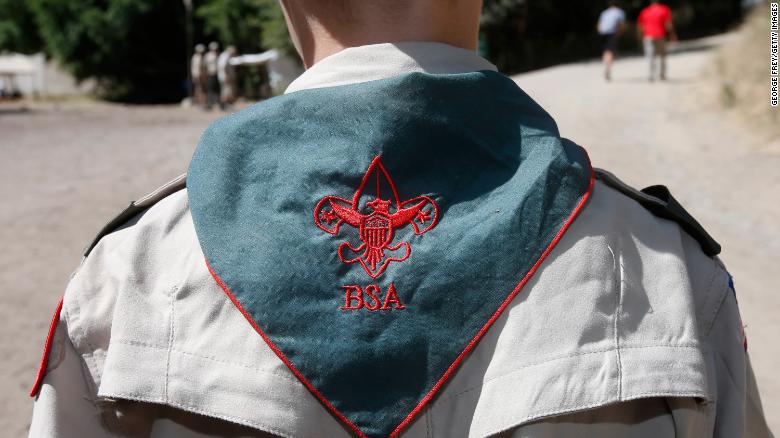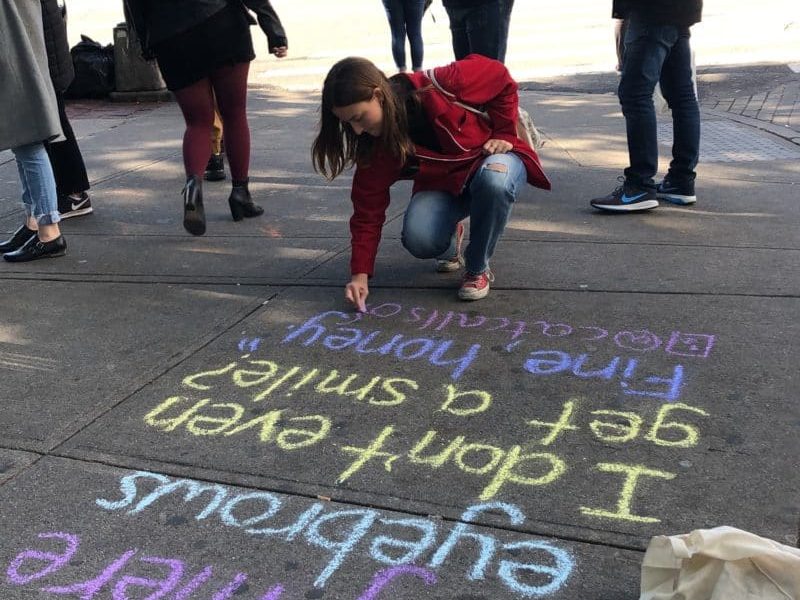
The Boy Scouts is at a crossroads of preserving its future and atoning for its past. The bankruptcy reorganization plan it recently filed with the court resulted from litigation pursued by men who say they were abused as children by Scout leaders Just last week, the group representing these survivors objected to that plan, saying it “minimizes the organization’s history of failing to protect children from sexual predators”.
One way for the Boy Scouts to acknowledge past wrongs is to become a paradigm of child sexual abuse prevention, educating members to stop abuse before it begins. There’s a way to do both — maintain the good traditions of the Boy Scouts and acknowledge survivors’ pain — and it’s this: instituting a Boundaries Badge as part of the scouting curriculum.
There’s a whole list of the character traits scouts are supposed to develop, the so-called Scout’s Law: A scout is trustworthy, loyal, helpful, friendly, courteous, kind, obedient, cheerful, thrifty, brave, clean, reverent. It’s assumed that this means they respect another person’s boundaries. But just assuming isn’t good enough anymore. Besides, when one of the Scout traits is “obedience” to adults who can harm them, more must be done to temper these teachings, as well as to make them clearer. A Boundaries Badge for scouts can help.
Childhood sexual violence remains rampant. One in ten children will be sexually assaulted before they turn 18 – nearly all by a family member or friend. And some research suggests that these rates are only a fraction of what is really happening- too often we don’t talk enough about boys as victims of abuse, despite ongoing scandals.
People who believe that boundaries are taught to students universally are mistaken. The range of sex education curriculua across the country is wide. Only 17 states require K-12 sexual health education to be “medically accurate”. Eight states and Washington D.C. educate children about consent, but 42 still don’t. Meanwhile, 29 states hope to mitigate sexual violence by telling students to avoid sex altogether – explaining nothing about the potential for physical or emotional abuse without intercourse.
Even a preventive curriculum like the one taught under Erin’s Law – a law requiring consent and boundary education in schools named after a sexual abuse survivor named Erin Merryn — is hard to institute. While 37 states have passed the law, many localities have chosen not to implement it. There’s no way to mandate Erin’s law federally; it’s up to states and local school boards, resulting in a veritable patchwork of sexual education throughout the US.
The refusal of traditional secondary pedagogy to cover anything related to sexuality doesn’t have to be fatal, though. When it comes to education about intimate activities, young people are uniquely situated to teach each other. Evaluations of peer-to-peer sexual education programs find them effective.
Boy Scouts — and Girl Scouts — can become powerful messengers of boundaries and consent. First, there are many of them. In 2019, 61,366 became Eagle Scouts, adding to the 2.3 million boys who engage in Scout activities every year. Secondly, they tend to be leaders among young people. Eagle Scouts are rules-oriented and can therefore become a virtual diaspora of community leaders among young men.
That would signify the beauty of the boundary badge. Boundaries don’t have to be about sex; they’re actually sex-adjacent. It’s like the peanut butter we place around the pills we give to dogs; the topic of boundaries covers the message that needs to get through: Namely that people have the right to choose how their bodies interact with the world.
It’s not as if the Boy Scouts of America doesn’t know this is a valuable lesson. The Boy Scouts Family Life Badge — required for an Eagle Scout — already requires a scout to meet with their parents and discuss topics including: good judgement with sex and etiquette and manners. The topics of consent and boundaries are merely the intersection of these lessons but, since there’s no approved curriculum, we are unable to calculate whether that connection is being made.
If there’s a top-down discussion of consent, parents may balk, but theinvestment in their child’s leadership provides a counterweight; the parents would have to turn down the qualification of Eagle Scout — and the scholarship opportunities it attracts — to reject what should be non-controversial subjects: empathy, not to touch someone without their consent, and respect.
This Boundary Badge would work for Girls Scouts too. Now that both organizations accept gender non-conforming troops, we can’t reserve these lessons just for those who identify in a certain way. And while victims of abuse are never at fault, educating adults only, or expecting decent adult behavior, hasn’t seemed to stem the spread of abuse. Focusing on those under 18 empowers children to recognize when a boundary is being crossed — and that they’re not to blame.
Teaching children about consent and how to speak up about unwanted advances may save an American institution. #MeToo and #TimesUp have successfully taught us that institutions will not stand if sexual misconduct is allowed. Boundaries like these need to become part of social America.
Perhaps the Boy Scouts of America will survive beyond the scandals, but only if the organization shows that it’s committed to assuring that not one more scout — nor one more child — falls victim again.


